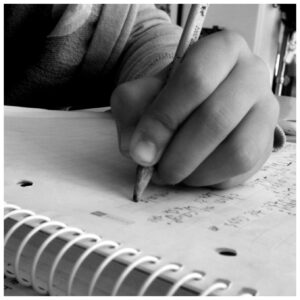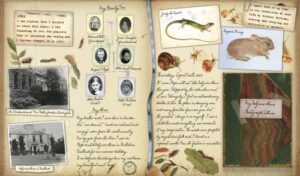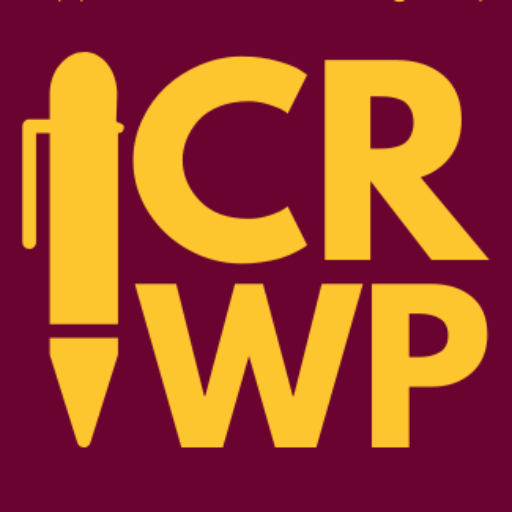
As a second grade teacher, I always started out the year reading the book, Call Me Marianne by Jen Bryant. In this book, a young boy named Jonathan notices an eccentric woman, Marianne, dressed in black cape and tri-cornered felt hat, carrying a notebook, and studying a newspaper article written about the new lizard exhibit at the zoo. When he returns her lost hat, she is “scribbling” in her notebook at the Reptile House. Intrigued, he asks her if she is a scientist. She replies that she is a poet, “watching and noticing details that other people miss,” recording those details through sketches and phrases in her notebook. She hands Jonathan his own notebook so he can sketch, record, and write about details he notices that other people might miss. When the story ends, I take that moment to be like Marianne, passing out brand new writer’s notebooks for us to begin our noticing of daily details that others might not take note of: the smells from the cafeteria, the sounds on the playground or how body language reveals feelings. I teach mini lessons on where to find ideas for personal writing. When read alouds spark memories, we write about it in our writer’s notebooks. We discuss our favorite authors and what their inspiration might have been for their books so that we too might find writing inspiration from our lives.
A few days later, I hand out another new notebook and introduce reader’s notebooks. This is our spot to explore stories, informational articles, and our thinking about reading: a place where we draw and write about characters and their connection to other characters, text-to-text connections, responses to what we read, as well as a plethora of other entries. That is where the confusion begins. Even though the notebooks are different colors and are clearly labeled WRITER’S NOTEBOOK or READER’S NOTEBOOK, someone always comes to the meeting area with the wrong notebook, even after I clearly said, “Your reader’s notebook, the green one,” multiple times. Because of this and my new role as an elementary instructional coach, I wonder is there a need for different notebooks, a writer’s notebook to collect ideas and play with mini lessons about writing craft, a reader’s notebook to notice author’s craft and to respond to reading, a science journal to observe, hypothesize and write lab reports, or could the same notebook be used for these different genres of writing?
Many professionals use some form of a notebook to capture ideas to develop later:
artists…sketch pads
writers…writer’s notebooks or journals
scientists…field or laboratory notebooks
detectives…small portable notepads.
This summer at the 2015 Summer Institute of the Chippewa River Writing Project, I set out to find if a notebook could act as a writer’s notebook/reader’s notebook, or if keeping different notebooks for different content was more effective.
I wonder what the writing instruction guru says about writer’s notebooks? The Writer’s Notebook: A Place to Dream, Wonder, and Explore, is a collection of short articles for NCTE’s journal School Talk where guest editor Ralph Fletcher also contributes his thoughts in a short piece. Dream, wonder and explore I say to myself…dream, wonder, and explore. Perhaps my answer is hidden within these three words of the title. We want our students to use reading and writing to dream about places, people, and experiences, to wonder about how things work, and to explore possibilities that might not seem possible but through reading and writing might become a reality.

Fletcher states that a writer’s notebook gives the students a place where they can live a writerly life because of the portability of the notebook. In addition, students start to take writing outside of the classroom and into their daily lives. Lifetime readers read: the same is true of writers: writers write. Notebooks help students to be actively engaged with their world by writing about it and their learning. Marianne instinctively knew what she was doing when she gave Jonathan his new notebook. She wanted him to have a tool (his new notebook) to record his wonderings, exploring the world of the new lizard exhibit at his local zoo. Marianne modeled what writers, scientists, and artists do for Jonathan by showing him the usefulness of her small notebook full of blank pages asking to be filled with her sketches, phrases, questions and noticings about an interesting topic–the new lizard. She used a teachable moment to capture his curiosity.
A writer’s notebook is a tool. It can be a place for students to borrow beautiful words and to record quotes or meaningful passages from authors of their favorite books. It can be a place to sketch memories, make connections, and explore questions about life and their world. It can be a place to develop passions, play with language or to imagine and embellish characters for stories of their lives or from their imagination. For students who are artistic and think in images, their notebook might have more of a sketchbook qualities, full of characters and detailed sketches of settings.
As teachers, we need to remember that writer’s notebooks are a personal treasure chest for thoughts, ideas, and language exploration. We can show students what our notebook looks like and how we capture our thoughts, transforming them into personal or professional pieces of writing. There are many images available through a search that show different types of writer’s notebooks entries that might spark a young writer.

A perfect resource to demonstrate how a writer’s notebook works is the book, Beatrix Potter: A Journal. In her journal, which could also be called her “writer’s notebook,” Beatrix has a combination of actual photos, sketches, and observations of real objects that she observed. In addition, there are notes, letters, and many more artifacts Beatrix utilized in her writing and illustrating of her books: The Tale of Peter Cottontail, The Tale of Benjamin Bunny, The Tale of Mr. Jeremy Fisher, and many more. She also includes photographs and sketches of her inspiration for Mr. McGregor and the washerwoman in The Tale of Mrs. Tiggy-Winkle. Teachers can show their class how Beatrice’s sketches evolved as she continues to sketch her pets and other animals she and her brother rescued. She then wrote letters to her former governess’ children, added a short story with her sketches when she didn’t have much to write, and eventually embellished these stories and revised them into The Tale of Peter Cottontail for publication.
So, is there a need for a writer’s notebook, reader’s notebook, and a science journal? Thinking about what Fletcher says and what Beatrice did, I don’t think so. There are so many different purposes and genres of writing, and they all can live in the same notebook. Writer’s notebooks are as individual as the writer. Teachers need to realize that writer’s notebooks do not fit a cookie cutter form but need to fit the personality and style of the writer. While we can model how we turn pages out of our writer’s notebooks into a polished piece, we need to honor the visual thinkers by letting them draw their brainstorming, letting the list makers make their lists, or the scientific thinkers to question “the how” of their environment or their scientific field of passion. Teachers may fear releasing control to the students, but if we are going to create writers, their notebook needs to be a reflection of that writer.
So let them sketch in their notebook,
– let them write in their notebook,
– let them observe and discover in their notebook,
– let them investigate their world in their notebook,
– let their notebook be a place to respond to what they have read,
– let their notebook be a place to record scientific data,
– let their notebook be theirs
and you will have created writers that will use their notebooks for life.
Delia King is a writing coach for Carson City-Crystal Area schools, in Carson City, MI, working with kindergarten-fifth grade teachers. She was a part of the CRWP Summer Institute in 2010 and returned to the 2015 SI as a veteran. She now serves as a teacher consultant and instructional coach.

This work is licensed under a Creative Commons Attribution-NonCommercial-ShareAlike 4.0 International License.



Leave a Reply
You must be logged in to post a comment.